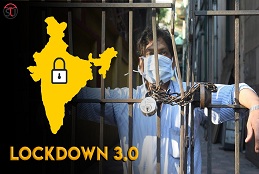Red Zones: A large number of other activities are allowed in the Red Zones.
All industrial and construction activities in rural areas, including MNREGA works, food-processing units and brick-kilns are permitted; besides, in rural areas, without distinction to the nature of goods, all shops, except in shopping malls are permitted.
All agriculture activities, e.g., sowing, harvesting, procurement and marketing operations in the agricultural supply chain are permitted.
Animal husbandry activities are fully permitted, including inland and marine fisheries.
All plantation activities are allowed, including their processing and marketing.
All health services (including AYUSH) are to remain functional, including transport of medical personnel and patients through air ambulances.
A large part of the financial sector remains open, which includes banks, non-banking finance companies (NBFCs), insurance and capital market activities, and credit co-operative societies.
Operation of homes for children, senior citizens, destitutes, women and widows etc.; and operation of Anganwadis has also been permitted.
Public utilities, e.g., utilities in power, water, sanitation, waste management, telecommunications and internet will remain open, and courier and postal services will be allowed to operate.
Most of the commercial and private establishments have been allowed in the Red Zones. These include print and electronic media, IT and IT enabled services, data and call centres, cold storage and warehousing services, private security and facility management services, and services provided by self-employed persons, except for barbers etc.
Manufacturing units of essential goods, including drugs, pharmaceuticals, medical devices, their raw material and intermediates; production units, which require continuous process, and their supply chain; Jute industry with staggered shifts and social distancing; and manufacturing of IT hardware and manufacturing units of packaging material will continue to be permitted.
Orange Zones
In the Orange Zones, in addition to activities permitted in Red Zone, taxis and cab aggregators will be permitted with 1 driver and 1 passenger only.
Inter-district movement of individuals and vehicles will be allowed for permitted activities only. Four wheeler vehicles will have maximum two passengers besides the driver and pillion riding will be allowed on two-wheelers.
Green Zones
In the Green Zones, all activities are permitted except the limited number of activities that are prohibited throughout the country, irrespective of the zone. However, buses can operate with upto 50 per cent seating capacity and bus depots can operate with upto 50 per cent capacity.
All goods traffic is to be permitted. No State/ UT shall stop the movement of cargo for cross land-border trade under Treaties with neighbouring countries. No separate pass of any sort is needed for such movement, which is essential for maintaining the supply chain of goods and services across the country during the lockdown period.
Additionally, the Centre has also allowed e-commerce websites to deliver non-essential items in orange and green zones.
All other activities, which are not specifically prohibited, will be permitted activities.
However, states/ UTs, based on their assessment of the situation, and with the primary objective of keeping the spread of Covid-19 in check, may allow only select activities from out of the permitted activities, with such restrictions as felt necessary.


Comments are closed.